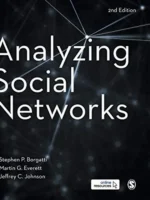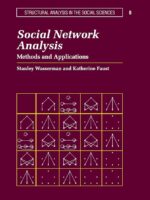Social Network Analysis Review
Social Network Analysis by John Scott is a concise conceptual guide to SNA, emphasizing definitions, measures, and research design. It gives you a sturdy vocabulary and the logic behind common techniques.
Overview
Scott covers network fundamentals, centrality, density and cohesion, positions and roles, blockmodeling, and methodological issues in data collection and sampling. Historical roots and contemporary uses are tied together clearly.
Summary
Chapters unpack what ties mean, how to represent networks as matrices, and how measures reflect structure and power. You see how equivalence reveals roles, how cohesion shapes diffusion, and why sampling and boundary specification determine inference.
Authors
John Scott is a sociologist and long-time SNA educator. His prose is economical and well-scaffolded for teaching.
Key Themes
Conceptual clarity before computation; roles and positions as explanations; careful boundary setting; transparency about limits of inference.
Strengths and Weaknesses
Strengths: crisp exposition and durable concepts. Weaknesses: fewer step-by-step software examples and limited treatment of modern statistical models. Pair with applied texts for implementation.
Target Audience
Students and researchers who want a tight conceptual baseline to anchor empirical work.
Favorite Ideas
Boundary specification problem; role equivalence vs structural equivalence; cohesion as social capital.
Takeaways
Start with definitions and research design. Clear boundaries and role logic produce stronger interpretations than post-hoc metric fishing.





